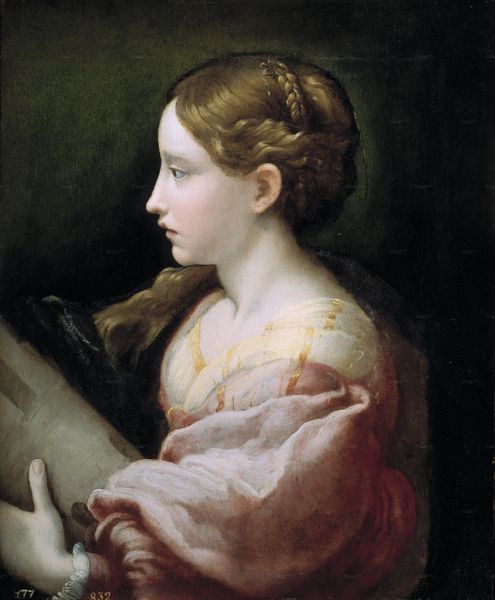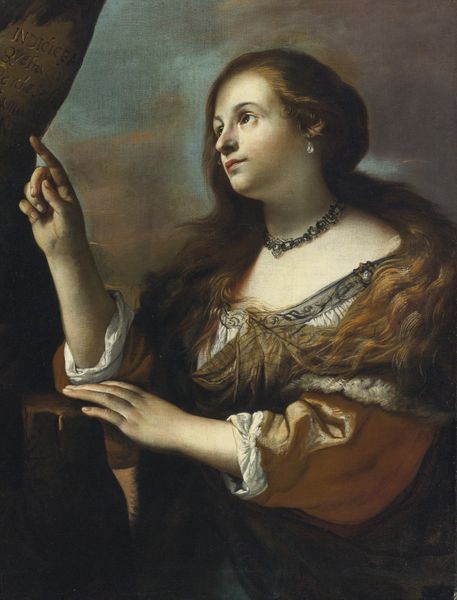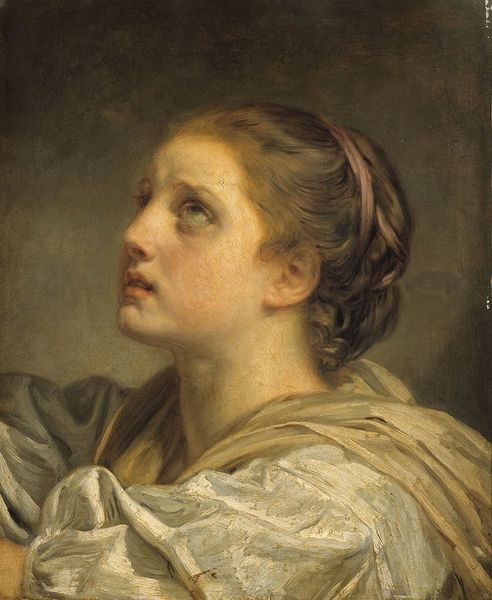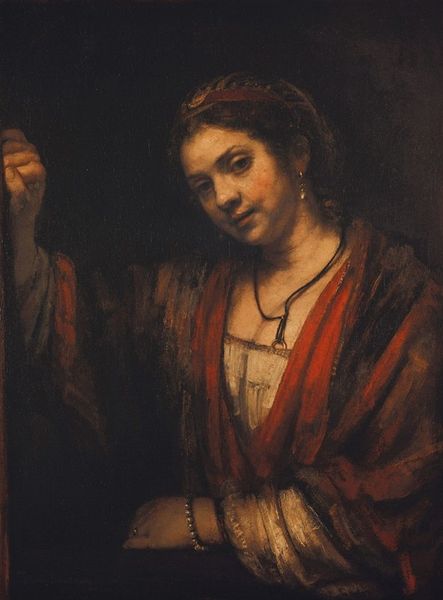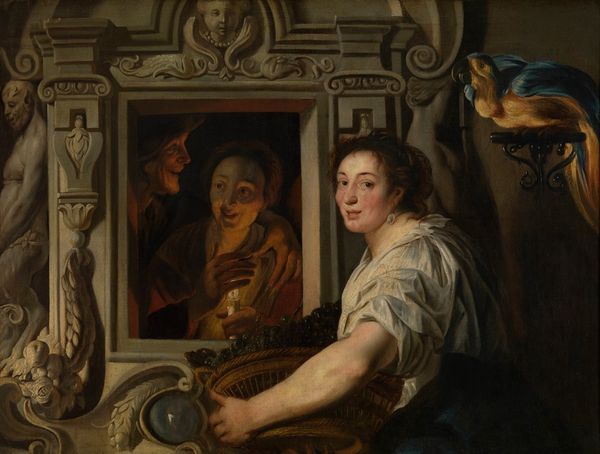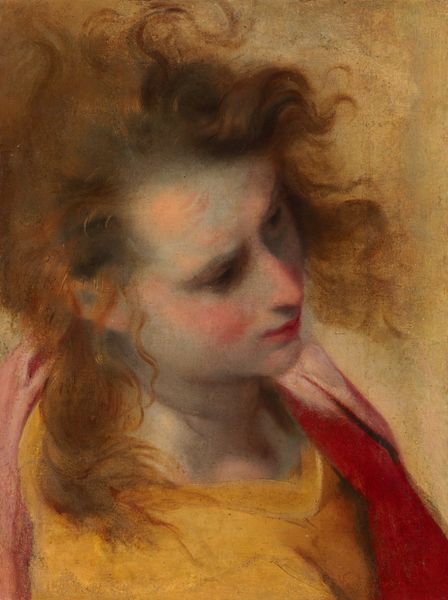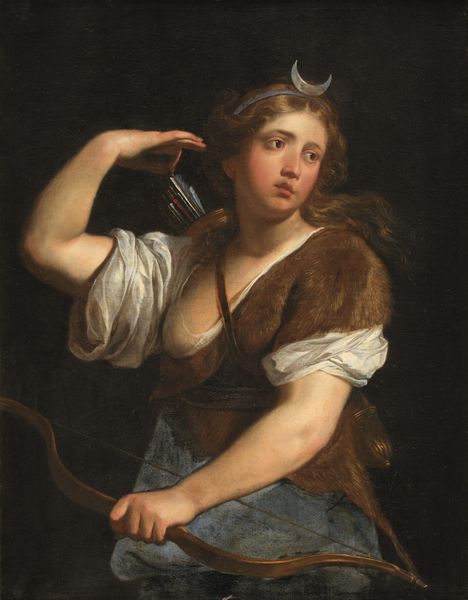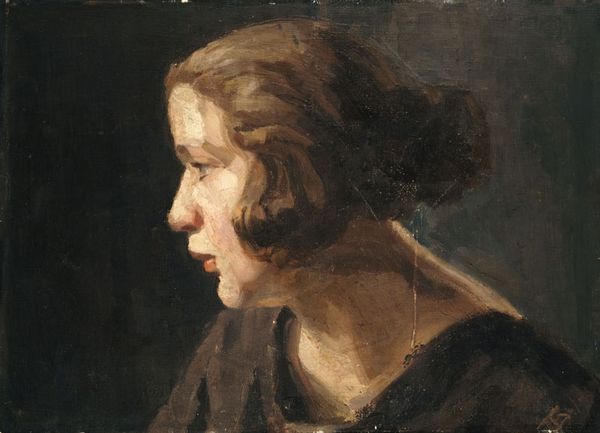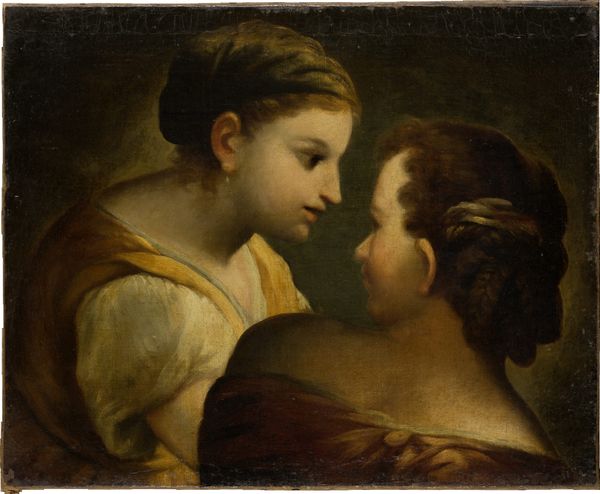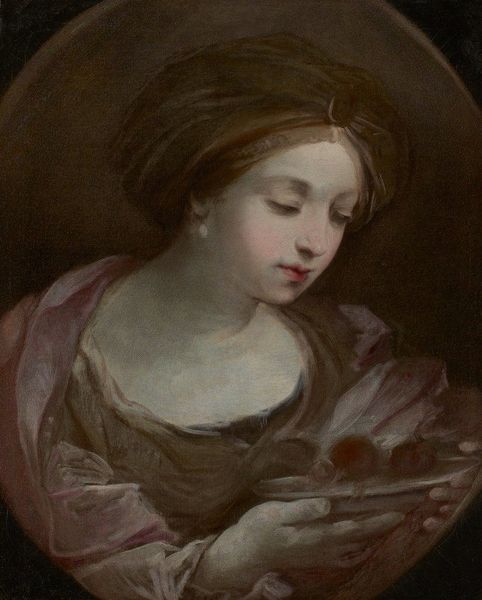
painting, oil-paint
#
portrait
#
baroque
#
painting
#
oil-paint
#
realism
Dimensions: 50 x 62 cm
Copyright: Public domain
Editor: This is Diego Velázquez's "A Sibyl," painted around 1631. I’m struck by the rich, tactile quality of the golden fabric and how it contrasts with the muted background. What stands out to you in this work? Curator: I see a masterful manipulation of materials and context. Consider the canvas itself, the base for Velázquez’s alchemy. How does the materiality of oil paint contribute to the perceived status, labor, and subsequent reception of this artwork? Editor: The oil paint does give it a richness, and that gold is striking. But what do you mean by status and reception? Curator: Think about the accessibility of oil paint in the 17th century, versus other media. Oil paints, though available, require specialized preparation. Velazquez would likely have an assistant responsible for preparing the materials. Does this suggest the production was limited to the elite or those with the means and connections to acquire and utilize them effectively? And what of the sitter; is she noble, learned? Note the materials, too: the pearl necklace and silk ribbon—elements of display indicating status and affluence. Editor: So, you're saying that the materials themselves tell a story about who had access to art, both as makers and subjects? Curator: Precisely. It also provokes questions of consumerism even then: how the visual language of wealth and access was already shaping how art was made and received. Editor: I hadn't considered the connection between materials, labor, and consumption in this way. Thank you! Curator: A work is as much about its making as it is about its surface. Always interrogate the raw components and social dynamics that brought art into being.
Comments
No comments
Be the first to comment and join the conversation on the ultimate creative platform.
